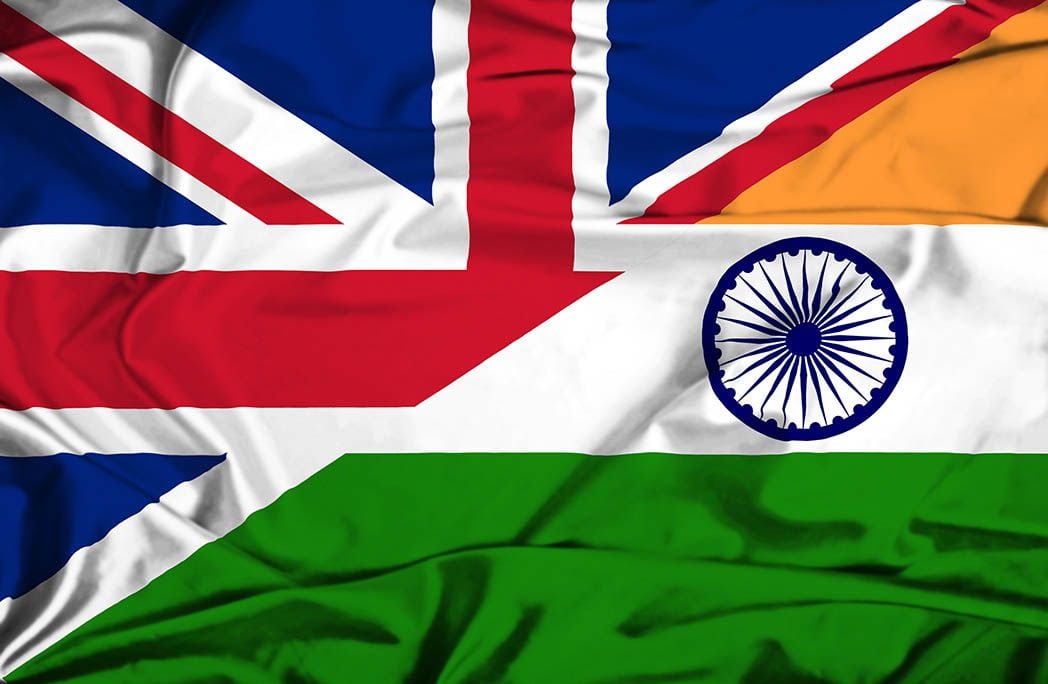Pound-Indian Rupee Exchange Rate Showing the Potential For More Gains

Image © Adobe Images
- GBP/INR has reversed trend in the short-term
- There is a possibility it could rise further: 88.00 key
- Rupee to be driven by RBI minutes and risk trends
The GBP/INR exchange rate is trading at around 86.93 Wednesday, having risen 0.57% so far since the start of the week.
Studies of the charts suggest the exchange rate is biased to continue rising over the short-term.
The 4hr chart - used to determine the short-term outlook, which includes the coming week or next 5 days - shows the pair having undergone a strong recovery after basing at the July 30 lows.

The pair has also established a new sequence of peaks and troughs higher on the 4 hour chart - or higher highs (HH) and higher lows (HL) - which strengthens the case that GBP/INR has entered a new short-term uptrend. Given 'the trend is your friend' this is likely to continue.
There is substantial resistance overhead, however, and this will need to be breached before more upside can be confirmed. A break above 88.00 would provide the confirmation and probably lead to a move up to 89.00.
Alternatively, there is also the possibility the pair could go sideways if it fails to break above the overhead layer of resistance.
The daily chart shows the pair having possibly formed a bullish inverse head and shoulders (H&S) pattern.
These patterns are composed of a deep trough (the head) and two troughs either side (the shoulders) and literally looks like an upside-down ‘head and shoulders’.
If the pair breaks above the trendline and the 88.00 level it will confirm a continuation higher.
The inverse H&S gives us an idea of how much higher, as it is usually the same distance - or a ratio of 0.618 - of the tip of the trough low to the neckline.
Prices often stall when they touch major moving averages, and the 200-day MA at 89.550 provides a target at about the level of the height of the pattern extrapolated higher by a ratio of 0.618.
The daily chart is used to give us an indication of the outlook for the medium-term, defined as the next week to a month ahead.
The weekly chart - which is used to give us an indication of the outlook for the long-term, defined as the next few months - shows another kind of H&S pattern, but this time a bearish H&S topping pattern.
This suggests an eventual conservative downside target at 80.75, however, the reversal on the lower time frames discussed above, means the pair may be in the process of establishing a new bullish uptrend.
There are, therefore, two potential outcomes in the long-term, one bearish and the other bullish.
At the moment it is difficult to tell which will pan out: a break below the 83.32 key July 30 lows would probably lead to a continuation down to the aforesaid target at 80.75.
On the other hand, if the current short-term uptrend continues and manages to break above a green trendline drawn connecting the head and the top of the right shoulder, then that would negate the negative implications of the H&S and probable see the pair continue higher to a target at 92.00.
The hammer candlestick pattern formed at the July 30 lows is a bullish indicator supporting a reversal of the trend higher, although on its own it’s not enough to negate the bearish case altogether.
Time to move your money? Get 3-5% more currency than your bank would offer by using the services of foreign exchange specialists at RationalFX. A specialist broker can deliver you an exchange rate closer to the real market rate, thereby saving you substantial quantities of currency. Find out more here.
* Advertisement








